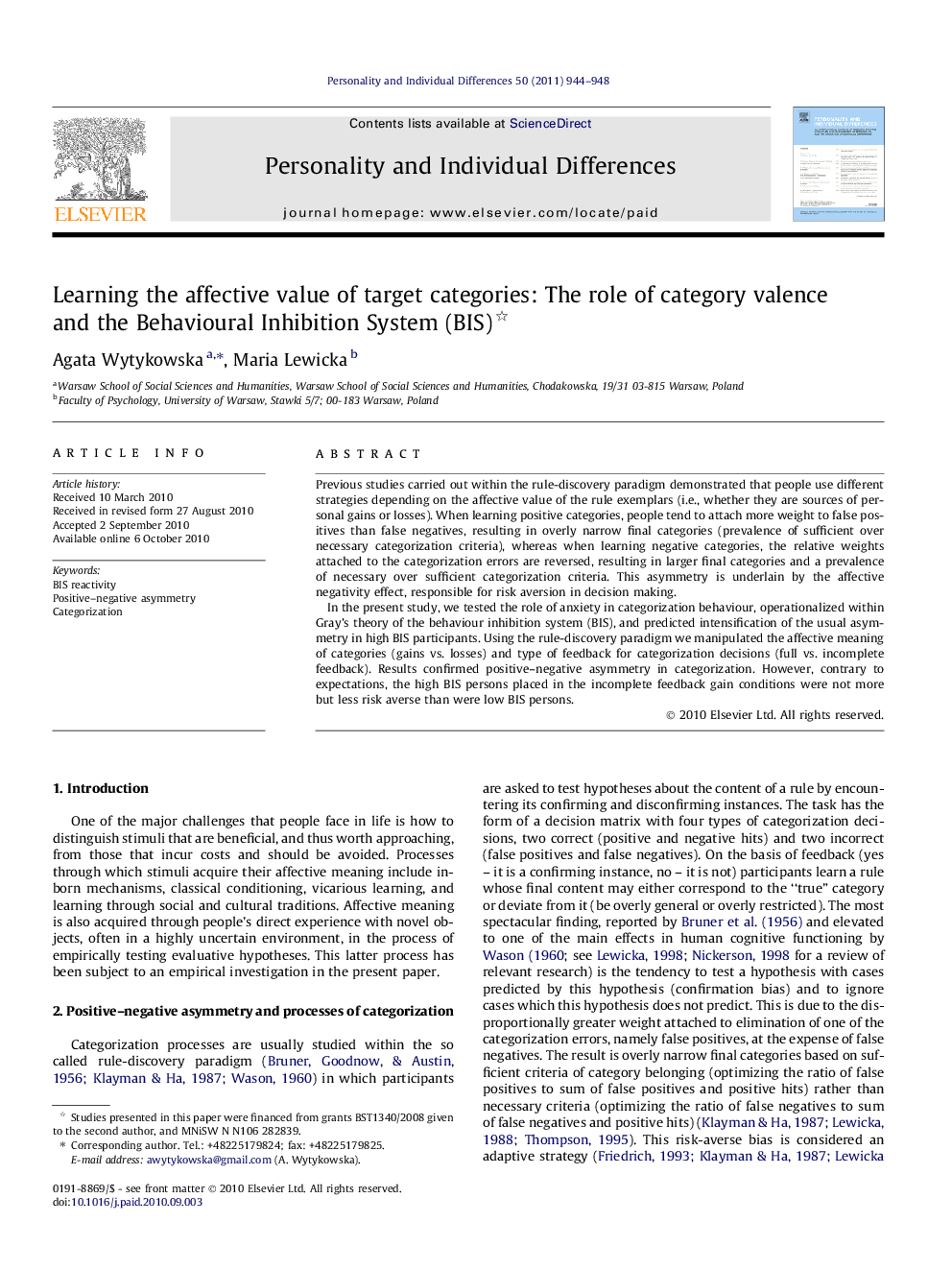| کد مقاله | کد نشریه | سال انتشار | مقاله انگلیسی | نسخه تمام متن |
|---|---|---|---|---|
| 891524 | 914046 | 2011 | 5 صفحه PDF | دانلود رایگان |

Previous studies carried out within the rule-discovery paradigm demonstrated that people use different strategies depending on the affective value of the rule exemplars (i.e., whether they are sources of personal gains or losses). When learning positive categories, people tend to attach more weight to false positives than false negatives, resulting in overly narrow final categories (prevalence of sufficient over necessary categorization criteria), whereas when learning negative categories, the relative weights attached to the categorization errors are reversed, resulting in larger final categories and a prevalence of necessary over sufficient categorization criteria. This asymmetry is underlain by the affective negativity effect, responsible for risk aversion in decision making.In the present study, we tested the role of anxiety in categorization behaviour, operationalized within Gray’s theory of the behaviour inhibition system (BIS), and predicted intensification of the usual asymmetry in high BIS participants. Using the rule-discovery paradigm we manipulated the affective meaning of categories (gains vs. losses) and type of feedback for categorization decisions (full vs. incomplete feedback). Results confirmed positive–negative asymmetry in categorization. However, contrary to expectations, the high BIS persons placed in the incomplete feedback gain conditions were not more but less risk averse than were low BIS persons.
Journal: Personality and Individual Differences - Volume 50, Issue 7, May 2011, Pages 944–948